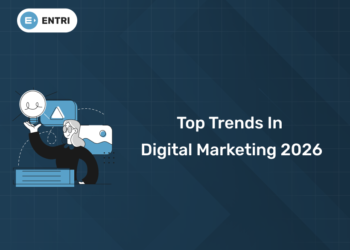Table of Contents
How can one get job in data science? Gaining sufficient knowledge in programming, machine learning, statistics, and other fields is challenging. Recently, I’ve seen that many people have the necessary abilities to obtain employment, but they lack a portfolio. Although a CV is important, having a portfolio with publicly available examples of your data science abilities will greatly enhance your employment chances.
While most data scientists these days have a portfolio, only few are truly exceptional. It may be difficult for readers to follow along and remain engaged if your portfolio is very generic, doesn’t feature projects that spark their interest, or lacks of explanations. Here are some easy techniques to make an ordinary portfolio stand out, so that your audience will recognize and value all of the hard work you’ve put into it.
Ready to take your data science skills to the next level? Sign up for a free demo today!
What Is a Data Science Portfolio?
A data science portfolio is a collection of your best work and demonstrates your skills as a data scientist. A data science portfolio should feature a combination of your code and documentation, as well as some writing samples that demonstrate your ability to effectively communicate about data. They help you visualize your process and how you think about problem solving.
Why Do You Need a Portfolio?
1: Which of the following algorithms is most suitable for classification tasks?
A data science portfolio will highlight your expertise in deep learning, exploratory data analysis, computer science, programming languages, and more. It’s also a great way to showcase any science projects or personal interests related to data science, such as creating an app or website or working on data sets at home.
🚀 Start Coding Today! Enroll Now with Easy EMI Options. 💳✨
Equip yourself with in-demand skills to land top-tier roles in the data-driven world.
Start Learning Now with EMI OptionsHow to Build a Data Science Portfolio?
1. Choose Your Platform Wisely
You can put your portfolio on a number of different sites. Find one that meets your demands by doing some research. For information on career options and skill development, have a look at online Data Science Bootcamps [Data Science Bootcamps].
2. Craft a Concise Introduction
Get off to a great start! Provide a concise summary of your abilities, relevant job experience, and educational background. Give a succinct presentation of your greatest work to get attention.
3. Highlight Your Most Impressive Work
Prioritize quality over quantity. Choose assignments that showcase your data science expertise and problem-solving techniques. Give a thorough explanation of every project.
4. Build Trust with Social Proof
Display your knowledge beyond technical proficiency. Provide references, links to pertinent publications, or your own presentations that highlight your problem-solving skills in the real world.
Ready to take your data science skills to the next level? Sign up for a free demo today!
5. Make Contacting You Easy
Provide your current phone number and email address on each page. Provide a link to your business-related social media accounts (like LinkedIn).
6. Tell Your Story – About You
On every page, enter your email address and phone number as of right now. Include a link to your company’s social media pages (such as LinkedIn).
7. Contact Information – Clear and Accessible
Make your contact details visible and accessible. The hiring managers should be able to get in touch with you with ease.
8. Showcase Your Best Work – Quality over Quantity
Even if they aren’t flawless, showcase your most promising work. Experimentation and learning from mistakes are key components of data science. Make sure to highlight your learning experience and significant outcomes.
9. User-Friendly Navigation – Keep it Simple
Give priority to easy-to-use navigation. Provide uniform formatting throughout and project descriptions that are well-organized. Having an easy-to-use portfolio improves your chances of getting that ideal position.
Examples of a great data science portfolio
-
Nikolaos Christoforidis: Technical Prowess with a Sports Twist
Nikolaos’s sports-themed project in his portfolio showcases his proficiency with Scikit-learn and Pandas. This strategy engages a wide audience by fusing technical proficiency with a sympathetic subject. -
Yan Holtz: Design that Captivates For design inspiration, look to Yan’s portfolio. You can’t help but scroll because of the motion and crisp, images. Every project has eye-catching, one-of-a-kind graphics that provide succinct explanations when clicked.
-
Samuel Verevis: Character & Narrative Using Wine Information Samuel adds comedy and amazing graphics to a common dataset, wine, to create a very original tale. His charts show his ability to teach difficult subjects in an interesting way, and they are also aesthetically pleasing.
-
Philipp Schöttler: Bitcoin Expertise & Content Creation Philipp creates an engaging portfolio by fusing his deep understanding of financial markets with his love for Bitcoin. He explores Bitcoin data and offers insightful analysis that data scientists, investors, and other interested parties may use.
While seeing samples can be encouraging, and reading tips such as this one can help you get started, the most crucial thing to remember is that your portfolio should be a true representation of you, including your interests, abilities, and personality. This is your data science path, after all. Additional materials are available to help you on the journey.
Ready to take your data science skills to the next level? Sign up for a free demo today!













